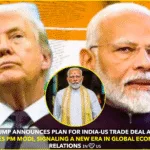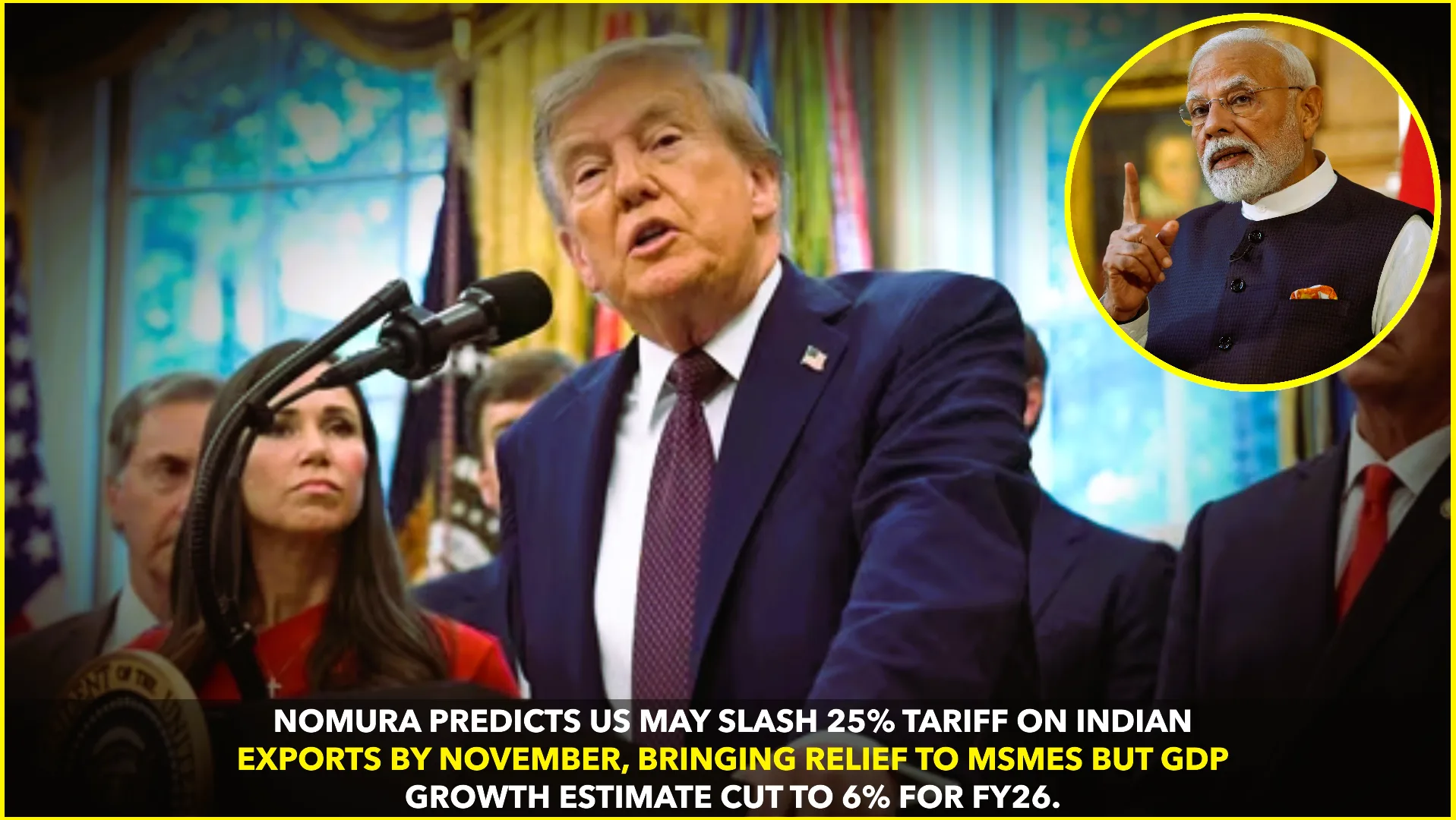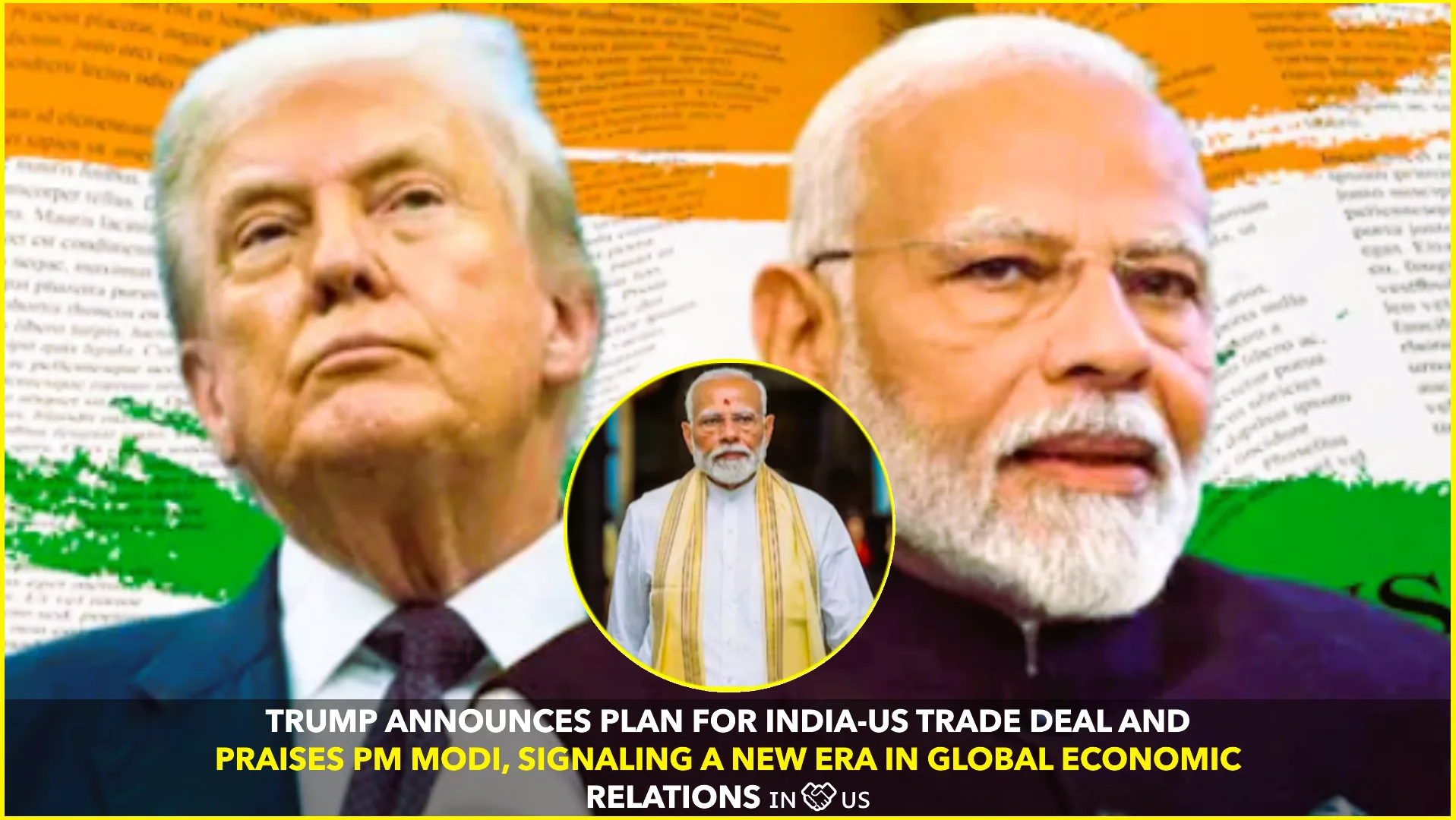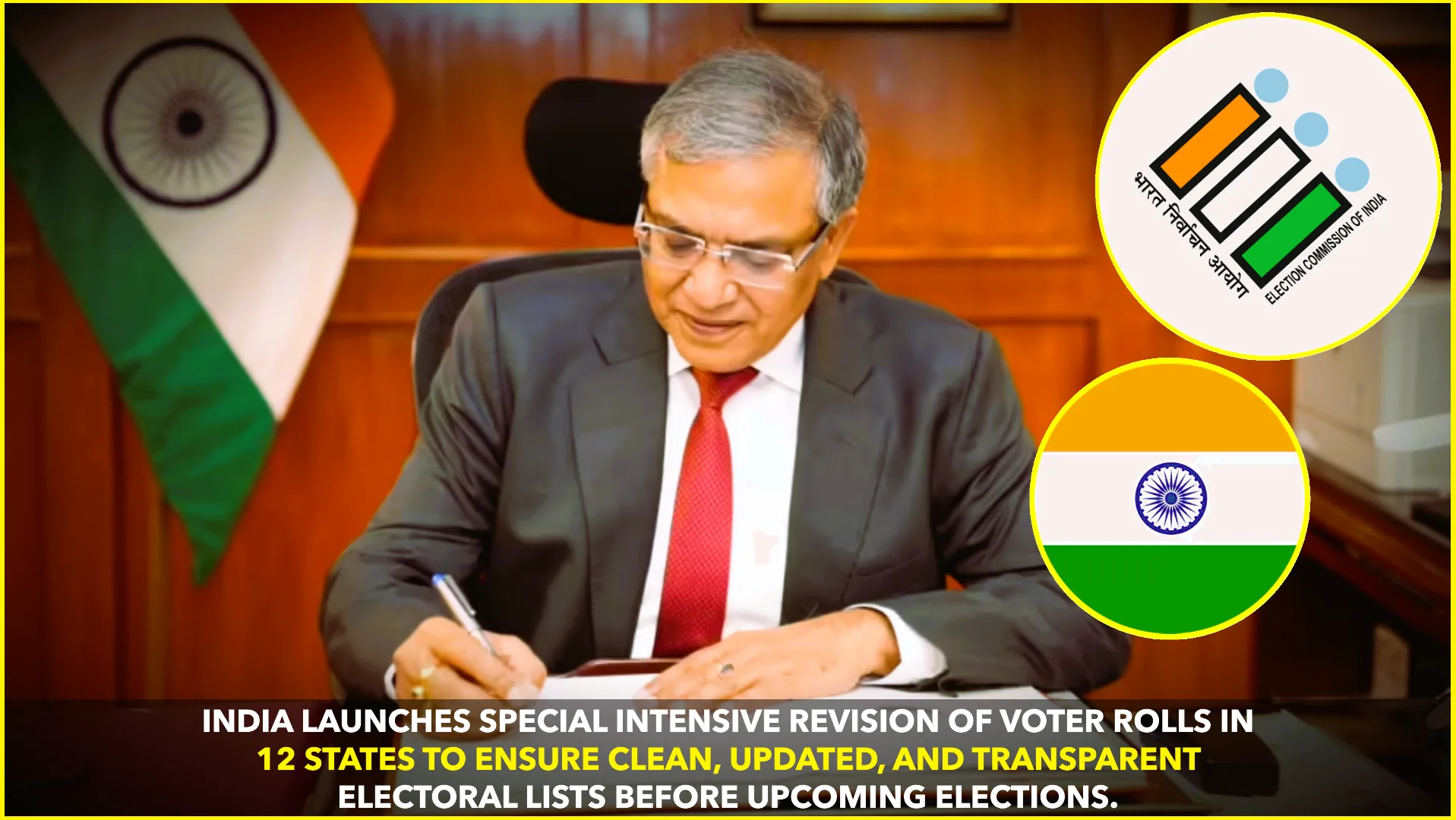TARIFF RELIEF AHEAD
Nomura, the global financial services group, has projected that the United States may scale back its additional 25% tariff on Indian exports by November 2025. If this move materializes, India’s total export tariff rate would come down from the current 50% to 25%. However, the reciprocal 25% tariff imposed by India on American imports is expected to remain in place until the end of FY26.
The development offers a glimmer of hope for Indian exporters, particularly small and medium-sized enterprises (MSMEs), who have been struggling under the burden of elevated trade duties for nearly two years. Yet, Nomura has also tempered expectations, warning that India’s GDP growth forecast for FY26 has been lowered to 6% from earlier estimates, citing weaker export demand and the risk of widespread job losses in key sectors.
Relief on the Horizon
The additional 25% tariff was initially imposed by the US as part of a broader trade recalibration aimed at protecting domestic industries. For India, the combined 50% tariff significantly weakened export competitiveness, hitting traditional strongholds such as textiles, seafood, and jewellery the hardest.
Should Washington move forward with the proposed reduction, exporters anticipate some respite in global markets where cost competitiveness is essential. “Even a partial rollback to 25% gives us breathing space,” said an industry representative from Tiruppur’s textile cluster. “But it will take time to recover lost orders and revive the confidence of international buyers.”
GDP Growth Outlook
While the tariff relief offers short-term optimism, Nomura’s analysis stresses that overall growth momentum remains fragile. The agency has cut India’s GDP forecast for FY26 to 6%, pointing to slowing exports, weakened global demand, and potential job losses across labour-intensive industries.
The report highlights that millions of MSME workers—particularly in rural and semi-urban belts—remain vulnerable as order books shrink. This is especially true for the jewellery and seafood sectors, which employ large sections of the workforce in Gujarat, Kerala, and West Bengal.
Monetary Policy Expectations
Nomura further expects the Reserve Bank of India (RBI) to intervene in response to softening growth conditions. Two rate cuts of 25 basis points each are predicted, one in October and another in December. These moves, according to the report, would help stimulate domestic demand and support investment amid external trade challenges.
Economists suggest that lower interest rates could also improve liquidity for MSMEs, enabling them to manage costs while navigating export headwinds. However, the balancing act between inflation control and growth revival will remain critical for policymakers.
GST Reforms and Inflation
On the positive side, Nomura has commended India’s ongoing Goods and Services Tax (GST) reforms, which are expected to simplify compliance and ease the tax burden for businesses. The reforms, it says, are already contributing to lower inflationary pressures by streamlining supply chains and improving efficiency.
For households, this could translate into reduced costs on essential goods, helping maintain consumption demand even as export-related sectors slow down.
Government’s Strategy
The Indian government, meanwhile, has been pursuing a multi-pronged strategy to mitigate the impact of high tariffs. This includes targeted fiscal support for MSMEs, structural reforms to boost domestic competitiveness, and efforts to diversify exports beyond the US market.
Officials have pointed to new trade agreements with Southeast Asian and Middle Eastern nations as part of this diversification drive. The government is also investing in production-linked incentive (PLI) schemes to push sectors like electronics, pharmaceuticals, and renewable energy into global markets less exposed to US tariffs.
Sectoral Risks
Despite these measures, certain industries remain on the edge. Textiles have faced declining global orders, seafood exporters report falling margins due to higher input costs, and jewellery makers are concerned about losing traditional markets to competitors like Thailand and Vietnam.
Industry experts warn that unless relief measures are timely and comprehensive, India risks losing its foothold in markets it has historically dominated.
Looking Ahead
The anticipated US tariff cut could mark the beginning of a gradual revival for Indian exporters, but the road ahead is fraught with challenges. Sustained growth will depend not only on favourable trade policies but also on domestic reforms, fiscal prudence, and diversification of export destinations.
For now, the message from Nomura is clear: while tariff relief offers hope, India must brace for slower growth and take decisive steps to safeguard jobs and industries most at risk.










